50 common flower pruning tips
You need to learn how to prune flowers. Proper pruning can not only make the flowers bloom bigger and more, but also cultivate "fine products" and reduce yellow leaves, diseases and insect pests. Especially in spring and summer, you should master the time and method of pruning to make the flowers bloom more timely and more gorgeously. Today, we have sorted out 50 common flower pruning techniques, let's learn together!
Pruning method:
1. After the flowers bloom, you can cut off the remaining flowers. If it is a small-leaf gardenia, it can quickly bloom a second wave of flowers. Large-leaf gardenia blooms once a year.
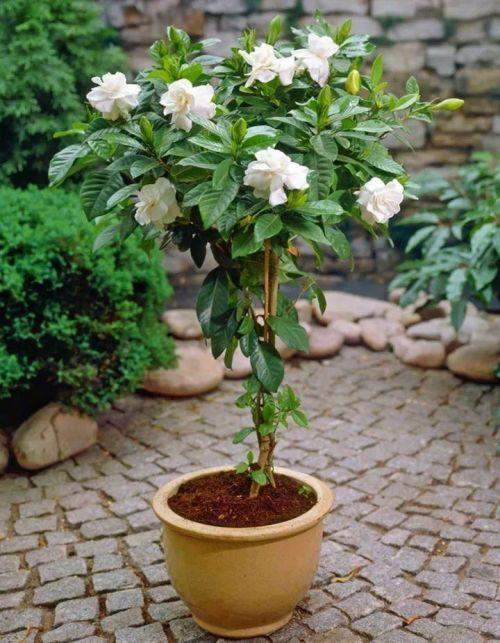
2. You can prune again in autumn every year. After pruning, the nutrients will be concentrated on the thick branches, and they will grow into large flower buds in the spring of the following year.
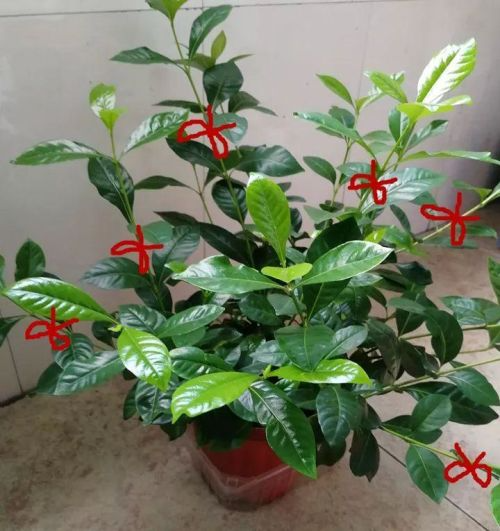
Pruning method:
1. Prune the roses every year before they sprout. For shrub roses, leave only 20cm above the ground. For climbing roses, only keep the strong main stem vines.
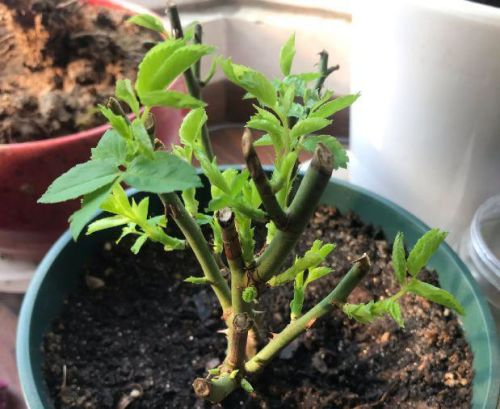
2. Before the flowers are about to bloom, cut the flowers and branches 10-20cm apart. If you find blind branches and buds, you can cut them at any time to save nutrients and ensure rapid re-flowering.
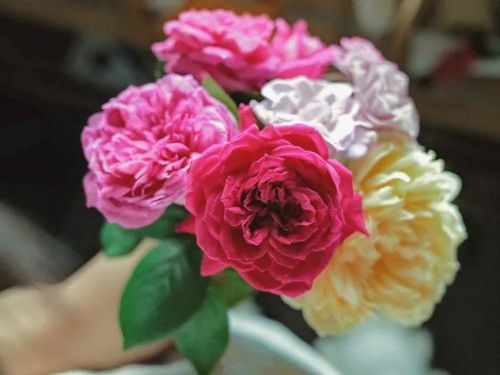
3. Prune in winter, usually around the beginning of winter, and cut off weak branches and branches with diseases and insect pests. In frosty and snowy weather, try to cut off the flower buds to avoid frost damage.
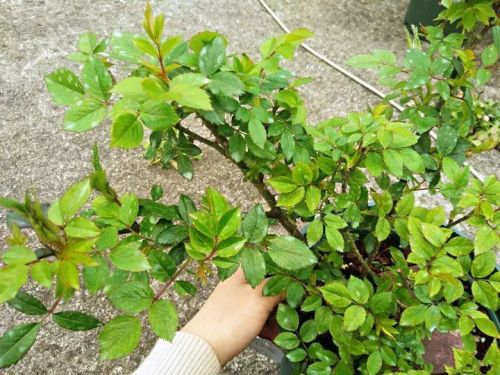
Pruning method:
1. You can do heavy pruning in mid-to-late March to early April. First cut the leaves (do not tear them off roughly, keep the buds in the axils of the leaves), then prune the branches. The green branches will only have 2 buds with leaves.
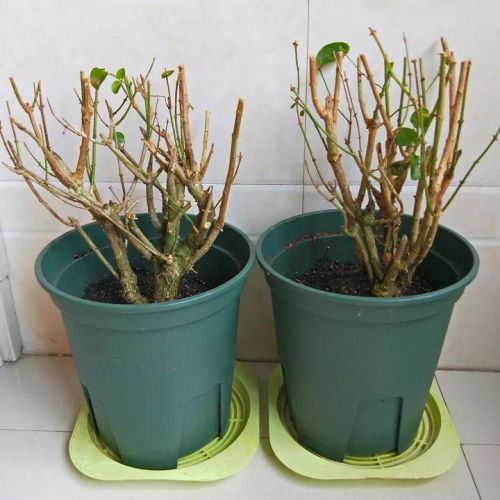
2. Prune after each flower blooms, starting from the second or third pair of leaves below the flower to retain nutrients and stimulate jasmine to bloom again;
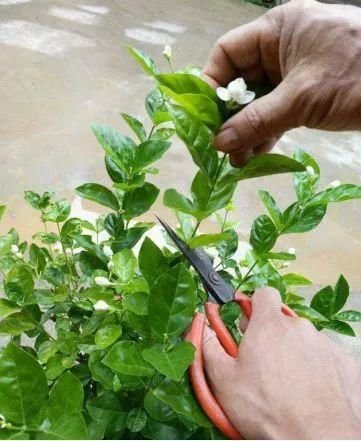
3. When the temperature drops below 5 degrees in winter, you can top the plant appropriately, cut off the overgrown and excess branches, and preserve nutrients for the winter.
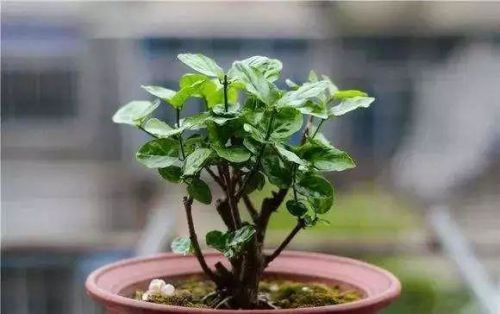
Image by: Dawn
Pruning method:
1. After the summer, the geranium will be reborn. It should be pruned again in September and October. In late summer and early autumn, the overgrown and deformed branches of the geranium should be cut off, and the old stump should be retained.
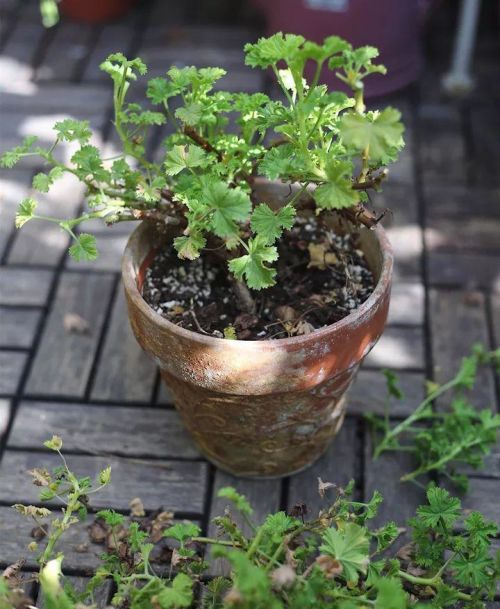
Image by: Coco
2. In order to grow more branches, pinch and top the branches around February in the spring before budding, and pinch off 3-8cm on the branches. Try to complete it before March so as not to affect flowering.
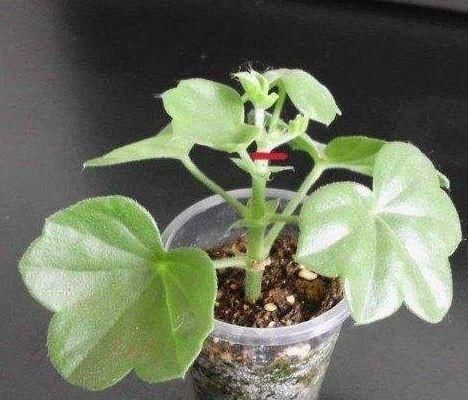
Pruning method:
1. There are relatively few flower buds for the first time. Pinching the flower buds ruthlessly can promote branch growth. After more branches and flower buds grow, the pot will bloom faster.
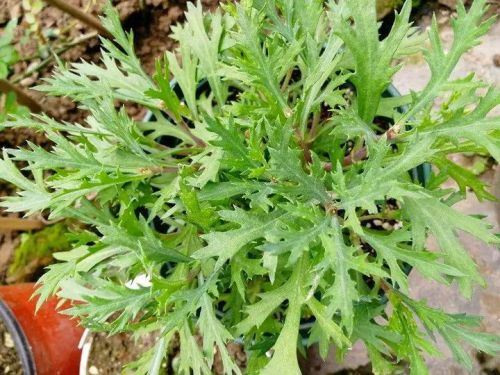
2. Every time the flowers are about to wither, cut off the remaining flowers and overgrown branches and leaves according to the ball shape, cutting off 5-10cm is enough to ensure the second flowering;

3. Prune heavily in February or March of the second spring after winter, leaving the old stump 5-10cm above the ground.
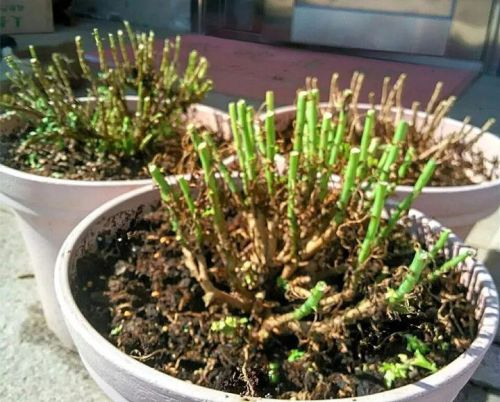
Pruning method:
1. Prune the flowers every time they are about to wither (preferably before they fall off), cutting off about 5-8cm of the flowers and leaves, and they will bloom again after 1-2 weeks;
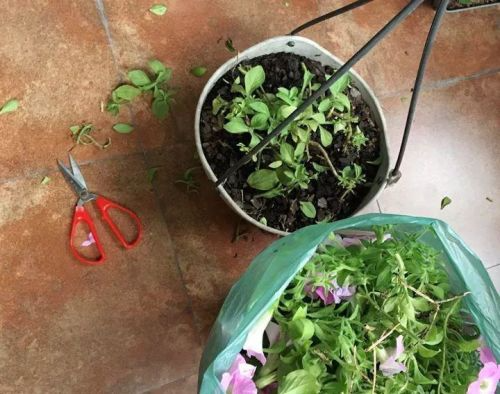
2. Although petunias are perennials, they generally bloom best in 1-2 years. In the early spring of the second year, they can be heavily pruned in February or March, leaving only branches 5-10 cm above the ground. They will bloom again in a month.

Pruning method:
1. Asparagus fern grows fast and recovers quickly in spring and autumn, so it is most suitable for pruning. Asparagus fern is considered a seedling in the first 1-2 years, and needs to be topped in spring and autumn, that is, cut short to prevent it from growing too long and unsightly;
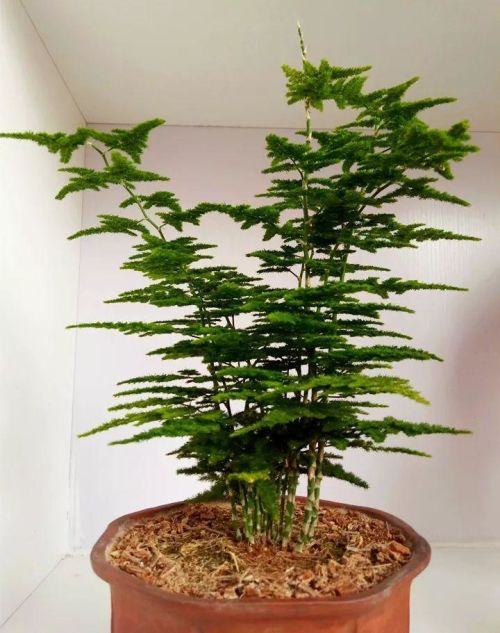
2. For asparagus fern that is more than 2 years old, you can shape it by pruning off yellow leaves, diseased leaves, and disliked branches to maintain its beautiful shape.
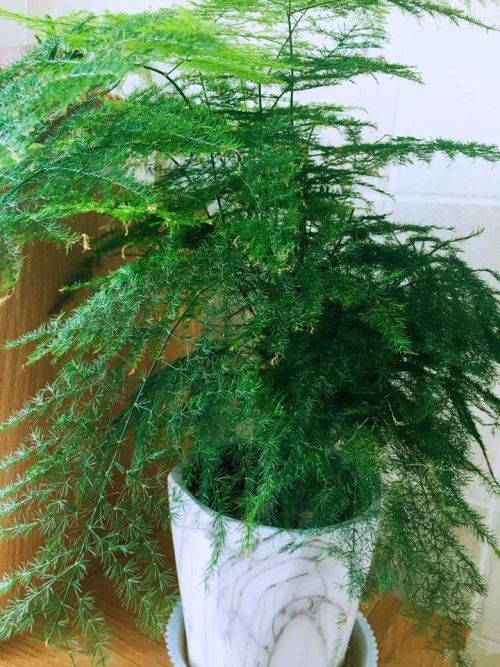
3. If the asparagus fern has large areas of yellow leaves or is not growing well, you can cut off all the leaves and leave only the thicker stems to allow it to grow again.
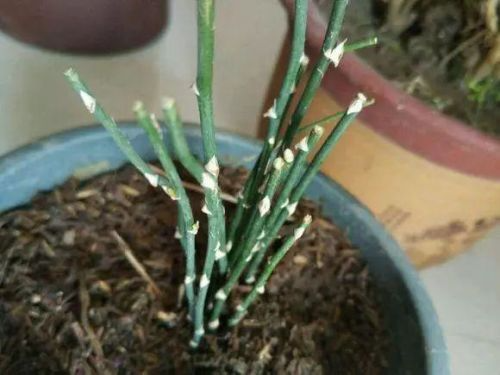
Pruning method:
1. If the leaves of the tiger skin plant grow too high, you can cut them shorter if you don't like them, so that the nutrition is balanced. The cut leaves can also be cut into segments for leaf cuttings;

2. If the plant becomes melted, frostbitten, or limp, it is still necessary to prune it. It is best to use a blade to cut it off in one go. Avoid direct sunlight after cutting. Do not water the plant after the wound has dried. Wait 1-2 weeks before watering again.
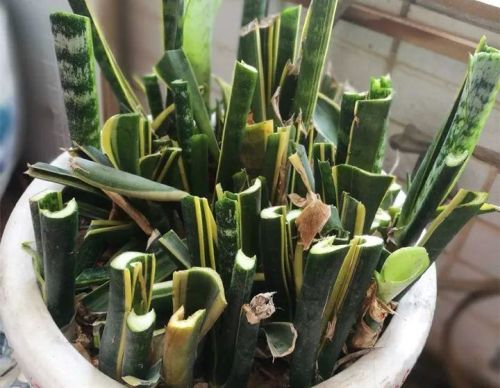
Pruning method:
1. In March and April, prune when the growth begins, comb out the dense and cross branches to ensure that each branch can receive sunlight and have independent growth space;
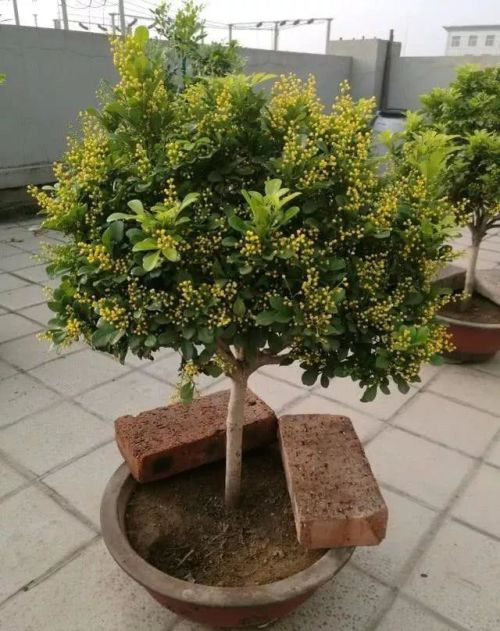
2. Prune in November and December when the growth is slow in winter, cut off diseased and weak branches, and cut into a rough shape. This will save nutrients and allow the plant to grow in the shape you like.
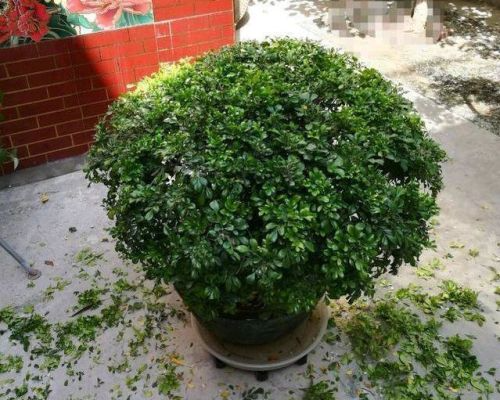
Pruning method:
1. Prune in February and March before flowering. First, think of the general shape and cut off the messy thin branches and long branches;
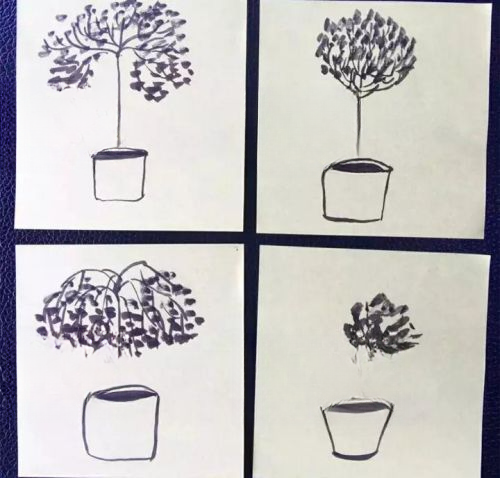
2. When the flowers are about to fade, prune them. Depending on the length of the bougainvillea itself, cut off 3-15cm of the flowers. Water less after pruning. After 1-2 weeks, water with phosphorus fertilizer and water, and it will soon bloom again.
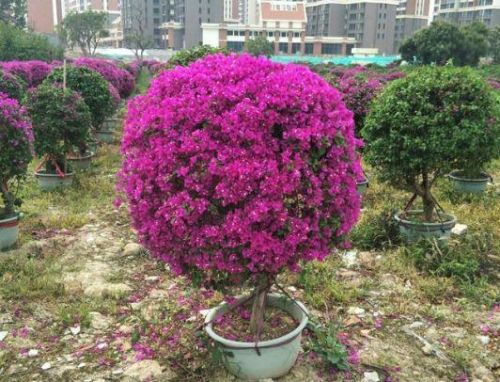
Pruning method:
1. Prune in January and February before buds appear, leaving only the main branches. The growth will be faster than those without pruning, which can ensure accelerated growth in the new year.
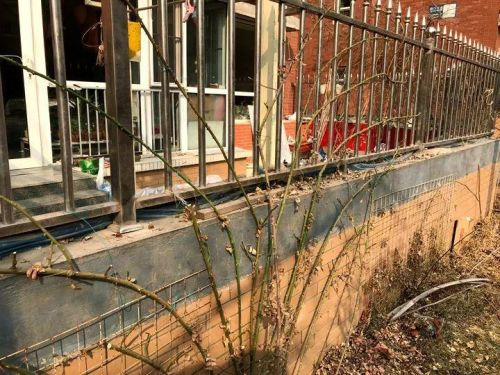
Image by: Free Handmade Love Baking
2. Prune after the flowers have bloomed. You can prune to control the shape, avoid growing in a bad direction, save energy to grow branches and leaves, and cover a larger area.
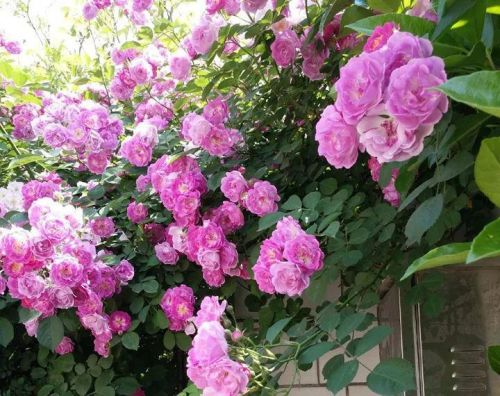
Pruning method:
1. Whether it is planted in the ground or in a pot, prune the flowers together with the remaining flowers after they bloom in spring and summer (preferably before they fall) to preserve nutrients;
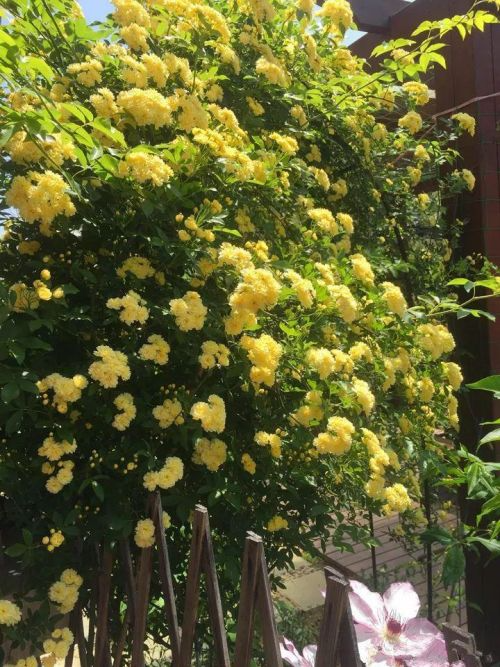
Image by: Land Gaoshui TSOG
2. The temperature in August is suitable, and the new branches that grow should be cut off to ensure the quality of flowering in the second year and reduce the situation where there are more leaves than flowers.
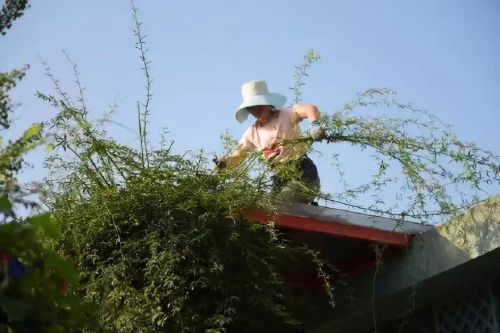
Image by: Houye from Feimao Country House
Pruning method:
1. Pruning in February and March is mainly to stimulate growth and flowering. All sick and weak branches after wintering can be pruned away;
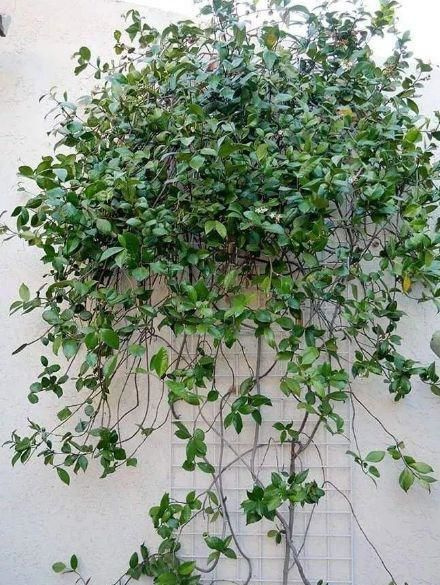
2. Prune in August and September. After being exposed to the sun in summer, many branches are old. Cutting them off can maintain growth and avoid pests and diseases and slow growth.
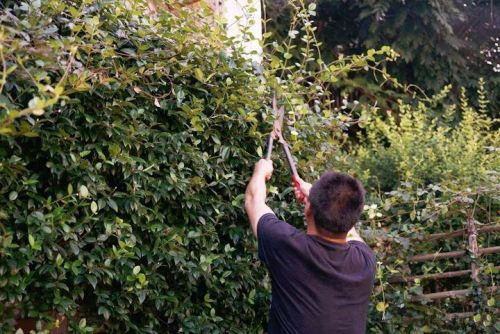
Image by: Twelve Barbarians
3. Prune in winter from November to December, and trim the plants according to your personal preferences to shape the general outline and growth pattern. This will save you a lot of trouble and effort in the second year.
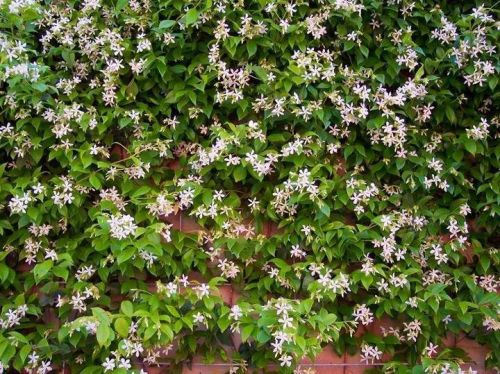
Pruning method:
1. The flowering period of bicolor jasmine is from March to October. Prune when the flowers are about to wither. Cut the remaining flowers and stems together to 3-8cm long, and cut off the branches that are overgrown and not flowering.
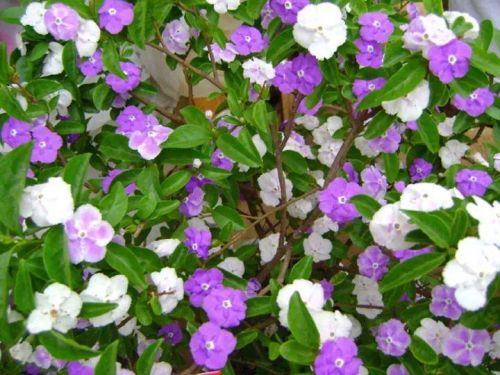
Image by: Hanfu
2. You can prune it into shape in winter, usually by topping it and pressing it down to prevent it from growing too tall. If planted in the ground, there is no need to control it, just cut off the overgrown and thin branches.
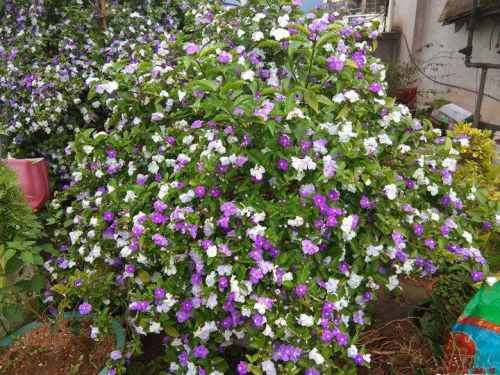
Pruning method:
1. Prune in mid-to-late January in the south and in February in the north. Just prune the sick and weak branches after winter and the cross-growing branches to ensure the quality of flowering this year.
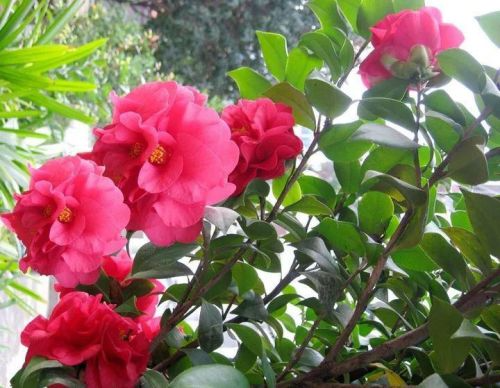
Do post-flowering pruning around February and April. When the flowers are about to wither, prune back 10-20 cm of the flowers and branches, and shave off the lower branches to maintain the upward growing tree shape.
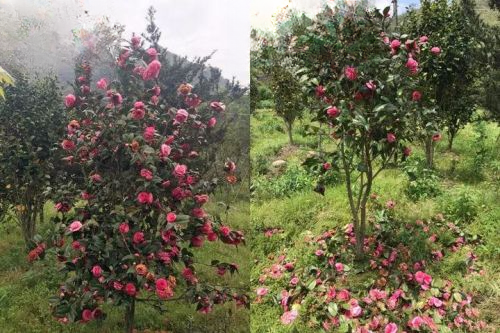
Image by: Muyi Garden Gardener
Pruning method:
1. You can prune it after the flowering period every year. When the petals wilt, cut off the pedicels under the flowers together to preserve nutrients for continued growth without yellowing leaves.
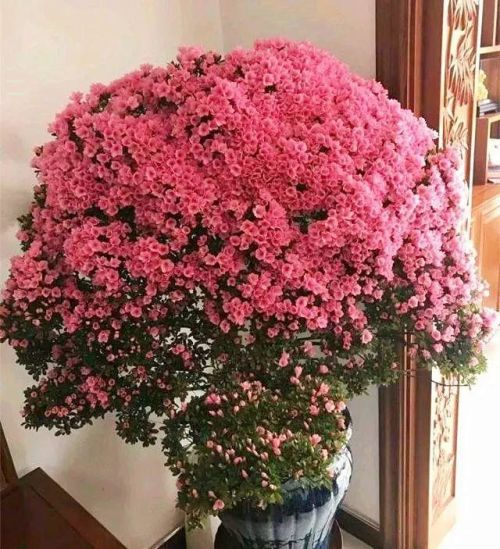
2. After cutting off the dead flowers, the azalea will grow branches and leaves rapidly. You can trim off the thin and tender branches that grow too tall. If the azalea grows too high, remember to top it and cut off the top to promote the divergent growth of the azalea. This is usually done in late spring and early autumn. Do not cut it in summer and winter.
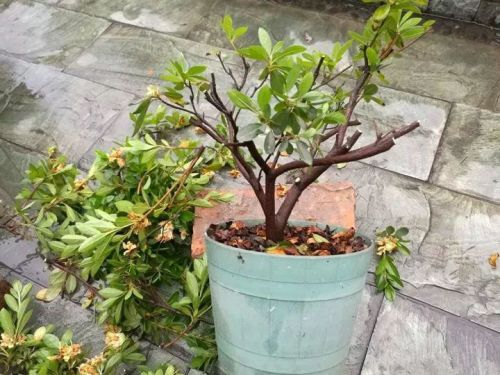
Image by: Happyjeep
Pruning method:
1. Prune after flowering. Cut off the remaining flowers when they are about to wither. You can cut them hard, leaving them 20 cm above the ground. This will allow more buds to grow, and the flowers will be bigger and more in the second year. Do not cut branches that do not bloom.
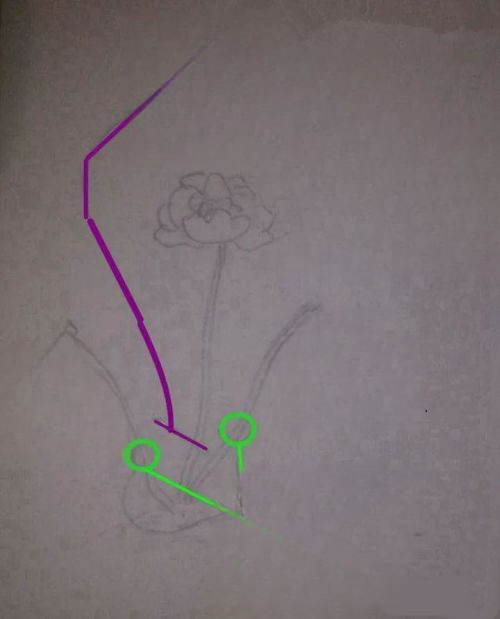
2. Prune in the early spring of the second year, which is mid-to-late January in the south and February in the north. All branches can be cut to 20 cm from the ground (keep 2 buds on each branch). Pruning can promote growth and make the flowers bigger and more numerous.
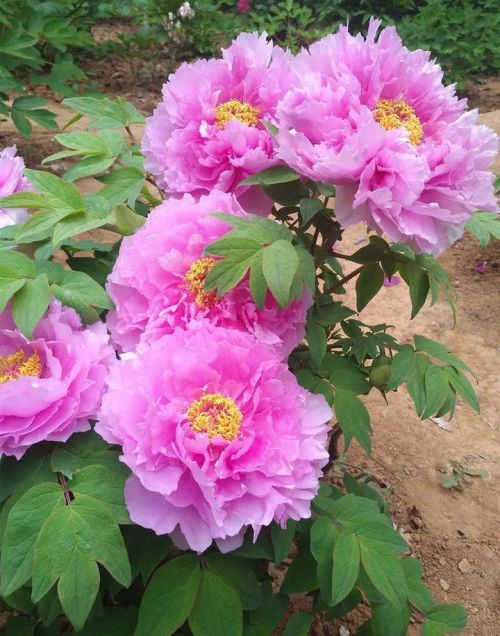
Pruning method:
1. Perform normal post-flowering pruning in July and August. Cut off the remaining flowers after flowering, and cut off the 10-20cm branches together. Do not cut the branches that have not bloomed yet. If you buy hydrangeas that have already bloomed, you can prune them slightly after flowering and prune them again in July and August.
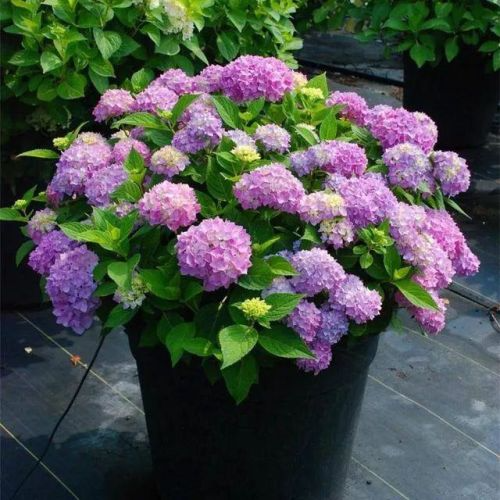
2. Hydrangeas whose new branches can bloom, such as Endless Summer, can be heavily pruned in January or February in the spring to stimulate growth and flowering. Pruning is not recommended for other hydrangeas.
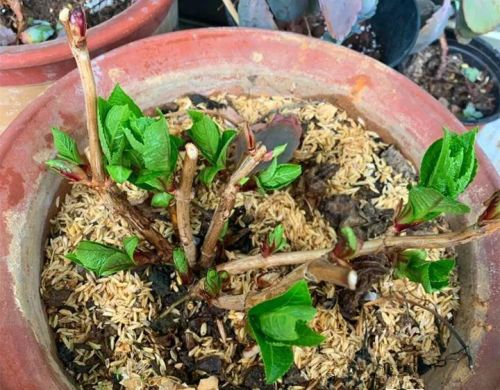
Pruning method:
1. Pruning is usually done in late winter, January to February in the south and February to March in the north. First, cut off the messy branches to ensure light and ventilation, then remove the thin branches and keep the strong branches.
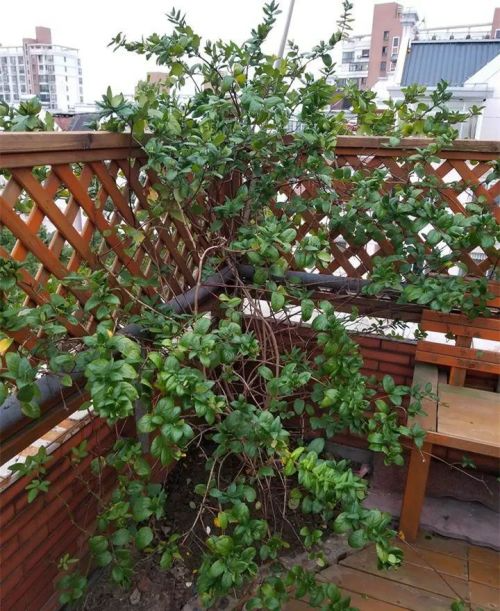
2. After flowering, you can choose to pick them on a sunny day, wash them, and dry them to make honeysuckle tea. The flower buds are rich in nutrients after being picked, and they will continue to produce buds in a short period of time.
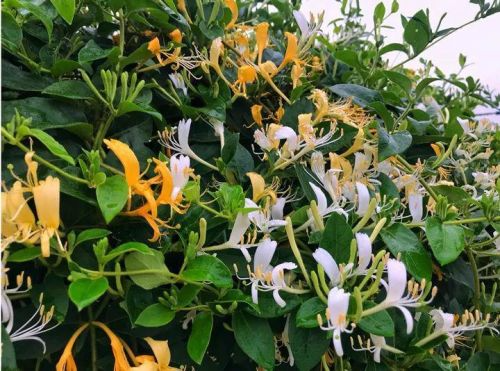
Pruning method :
1. Heavy pruning can be done in winter to cut off the tender new branches to prevent frostbite;
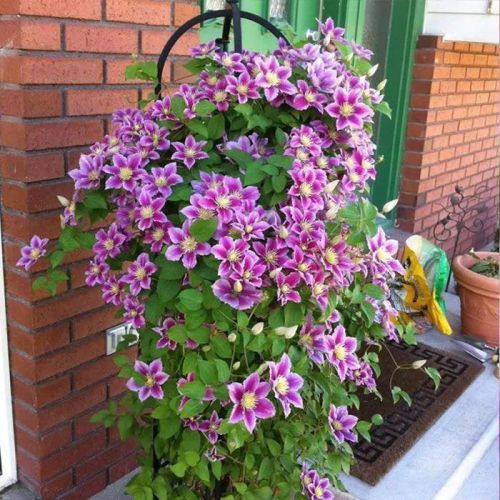
2. In early spring around February, cut off the dead branches after the winter, keep the pot surface clean and tidy, and avoid gray mold and anthracnose.
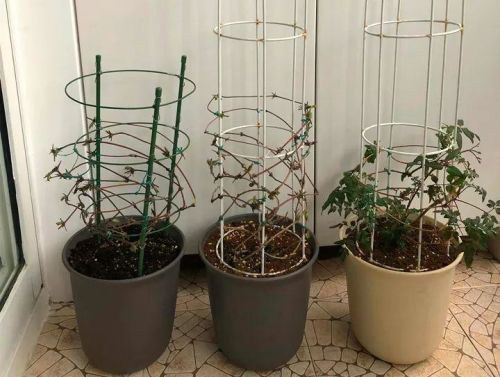
Image by: Cat's claws
Pruning method:
You can prune at any time of the year, but it is best to do it in the spring and fall growing seasons, when it recovers faster. Think about the shape before pruning. You can prune it in the shape of a tree, a cliff pile, a ball, or multiple layers. You can prune it once a month to control the shape.
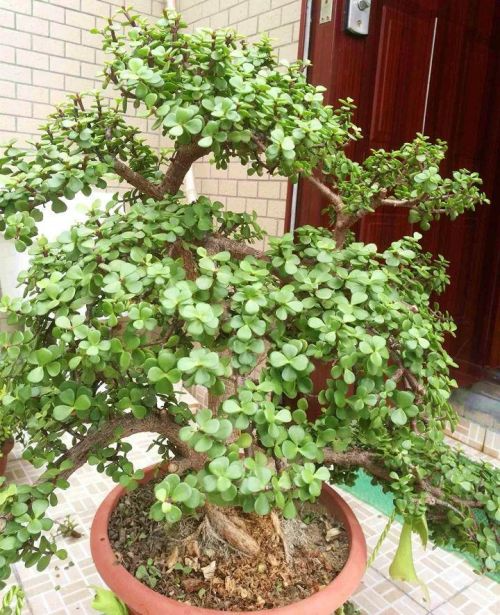
Photo by: Country Villager
Pruning method:
1. Pruning can be done throughout the year, but heavy pruning is best done in early spring and late autumn. In early spring, the tree is about to start growing wildly, and cutting off the branches that shrank during dormancy will help it grow better. In late autumn, when the tree is about to enter dormancy, it can be pruned into a rough shape.
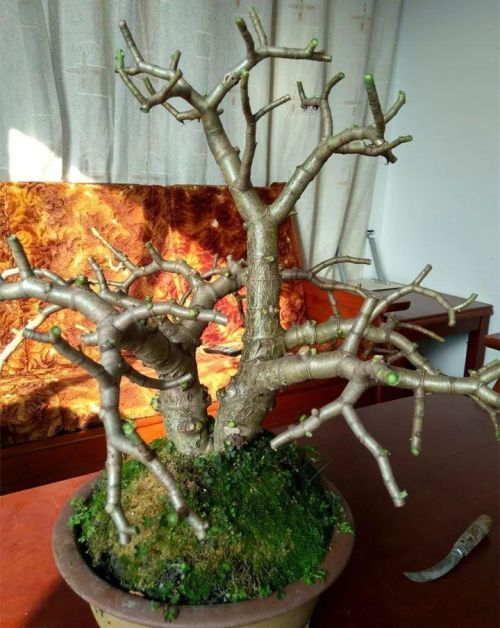
Image by: Dream Home
2. Usually, you only need to slightly trim the protruding, messy, diseased and damaged branches; if you want to re-shape them, you can cut off all the leaves and let them grow again. The cut branches can also be inserted into the sand to take root.
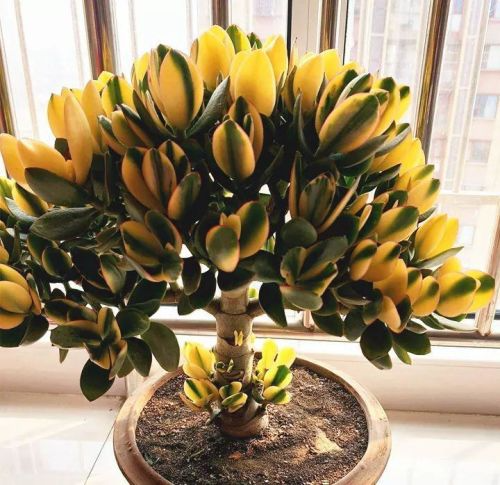
Image by: Xiaoxiaoyiguike0
Pruning method:
1. Lily bulbs can be planted for many years. They are usually planted in spring and autumn. The recommended burial depth is about 5 cm. Prune them after they bloom in spring and autumn, and then continue to maintain them. Wait for them to wither and hibernate naturally in winter (control water at this time), and they will bloom again in the spring and autumn of the following year.
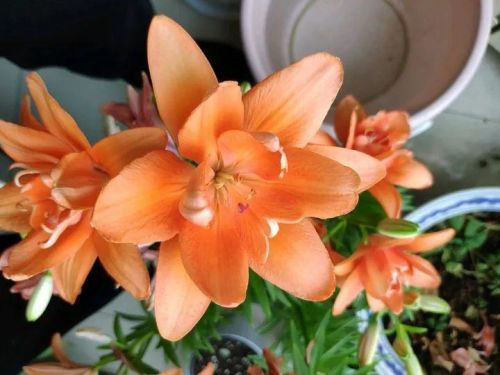
2. When the flowers are about to fade, trim the flowers and leaves by 10-20 cm to control the growth height of the lily and do not let it grow too high. Continue to take normal care and wait for it to wither and hibernate naturally. Do not cut it after it sprouts in the spring of the second year, just wait for it to bloom naturally.
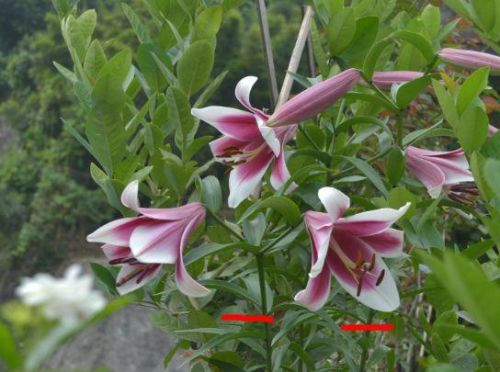
Pruning method:
1. Amaryllis grows relatively slowly and can be planted for many years. Generally, it does not need to be pruned much. If you want to grow the bulbs bigger, you can also cut them off when the flowers bloom and grow them hydroponically to save nutrients.
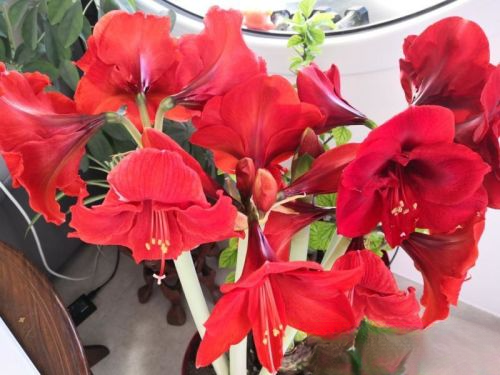
2. In late autumn, the leaves of Amaryllis will show signs of turning yellow and withering. At this time, you only need to trim and remove the unhealthy leaves. This can save nutrients, maintain hygiene, and avoid bacterial growth.
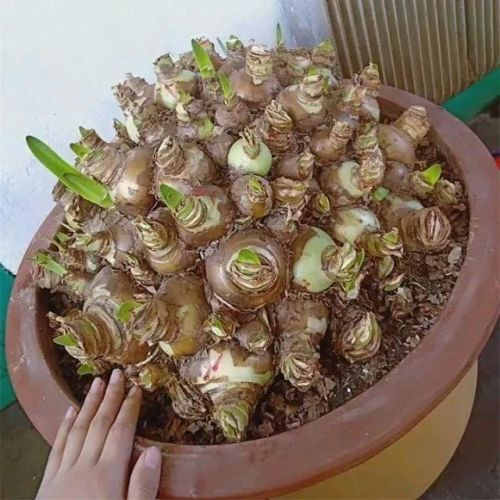
Pruning method:
1. Hyacinths usually bloom in winter, and many bulbs are only planted for one year. If you want to plant them for another year, you can cut them off and grow them in water for appreciation before the flowers wither, preserving the nutrients in the bulbs so that they can bloom the next year.
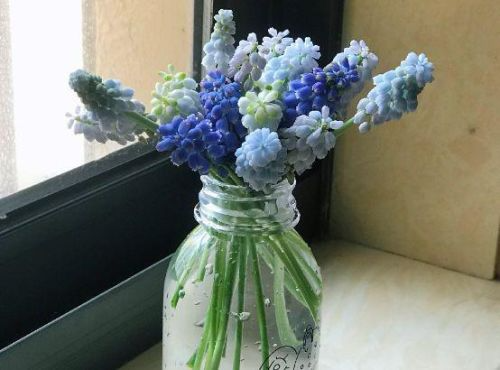
2. Continue with normal maintenance and wait until the hot weather in May and June when the plant enters a dormant period. When the leaves turn yellow and wither, cut off all the leaves, take out the bulbs and cut off the roots (only leave 0.5-1cm of roots), soak them in carbendazim for half an hour and then dry them. Wrap them tightly with toilet paper or newspaper and store them dry. Plant them again in autumn and winter.
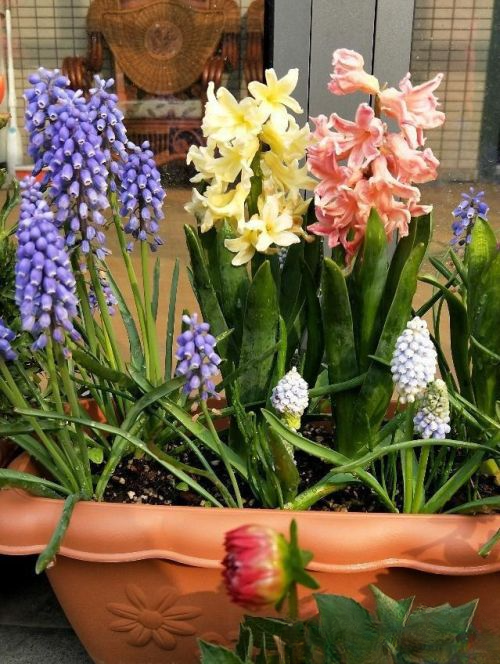
Pruning method:
1. As long as you find that the plants are growing too tall, becoming crooked, or becoming sparse, you can prune them. Generally, you should do it once every two weeks. If you don’t prune them, they will grow longer and thinner, and the flowers will become fewer and fewer.
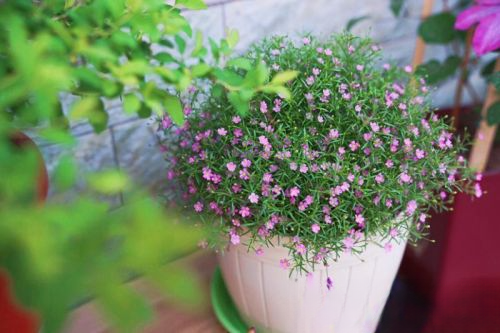
2. When pruning, first cut off the overgrown branches and leaves. Generally, cut them into a spherical shape. After cutting, place them in a cool place to allow the wound to heal, and then expose them to the sun after 1 day.
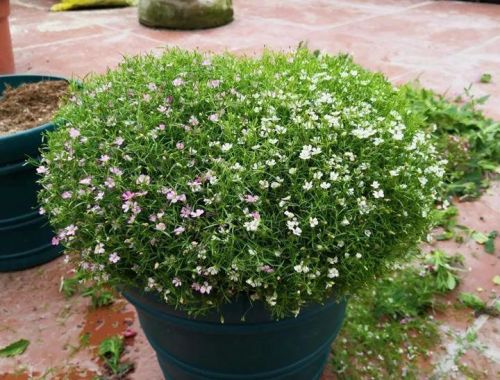
Pruning method:
1. Except for the flowering period (winter and spring), pruning can be done all year round. When pruning, in order to avoid excessive growth and preserve nutrients, first cut the branches that are too thin and tender, and then cut the branches that are diseased, pest-infested, or withered.
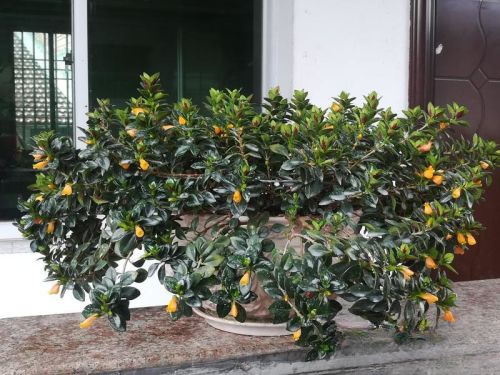
2. For seedlings and seedlings that have just been bought home, top them after 2 months of growth. You can pinch off the top 3-5cm to ensure that they will grow further and more vigorously.
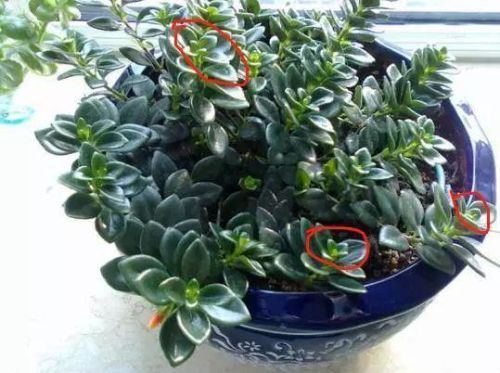
Pruning method:
1. Spring and autumn are the growing seasons, and pruning is possible in both seasons. You can do it according to your preferences, cutting off branches with few leaves, diseased branches, and weak branches to ensure the growth and flowering of other branches.
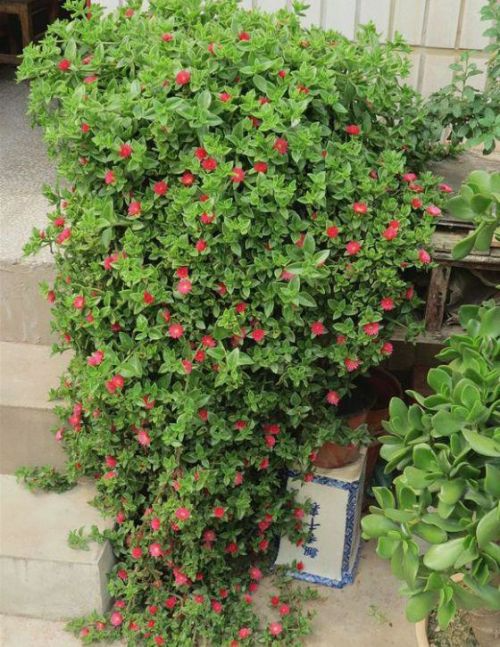
2. Before winter dormancy, you can do a heavier pruning to keep strong branches that are not easily frostbitten;
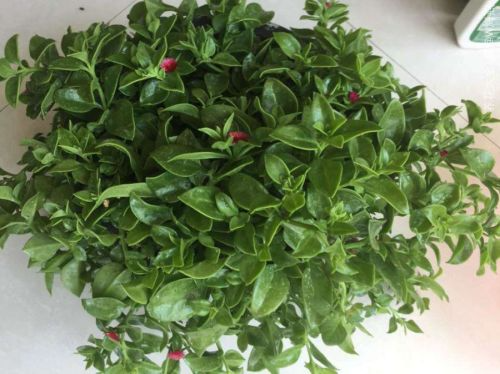
3. If you want the plant to grow more divergently (out of the pot), you need to pinch off the top 3-5cm, so that one branch will produce two branches and it will grow faster.
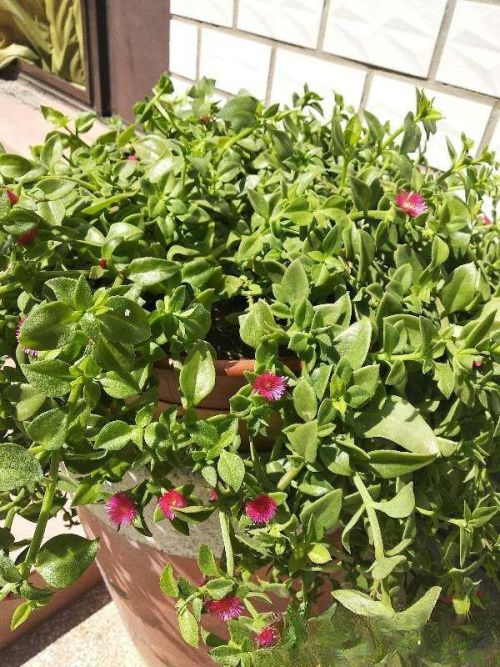
Pruning method:
1. The flowering period of lipstick spider plant is from November to June of the following year. Pruning can be done after the flowering period, around July. Cut off the messy branches, diseased branches, and branches with yellow leaves, and keep the nutrients for the strong branches, so that they can grow longer.
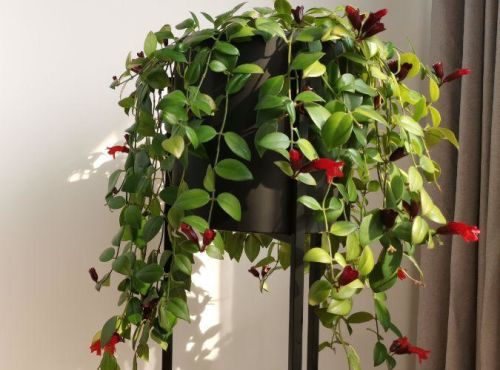
2. The pruned branches can be further used for cuttings. The vines of the lipstick spider plant have distinct roots. If you use more cuttings, they can create the effect of a screen or curtain.
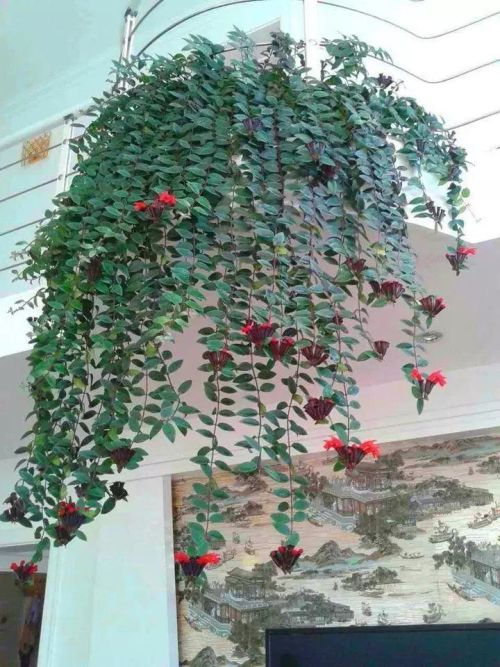
Pruning method:
1. It is best to concentrate on the growing seasons in spring and autumn, March to April in spring, and September to October in autumn. Pruning is very simple. Just shave a small flat head like leeks. After cutting, put it in a cool place, water less, and water it normally after a week.
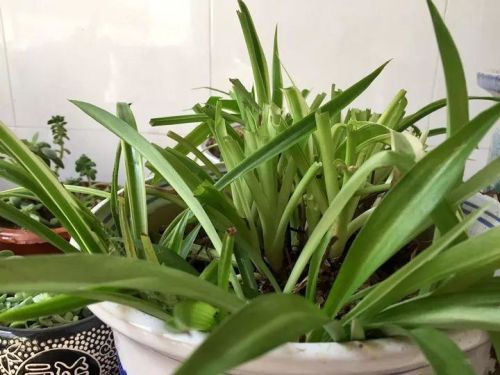
2. After the new buds emerge, you can place it in a location with diffused light and water it appropriately. The new leaves will grow more beautiful than before, and the plant may bloom due to the concentrated nutrients.
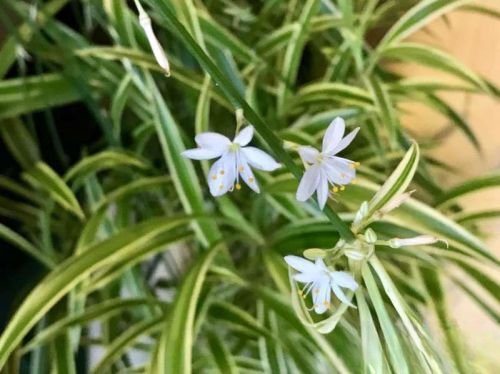
Pruning method:
1. After yellow leaves appear, you can prune them at any time, and cut them off quickly to avoid infection and deterioration;
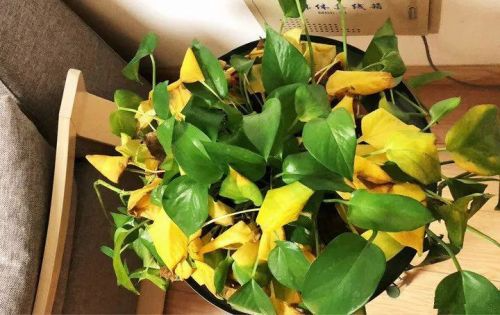
2. If you are not satisfied with the current situation and want to grow leaves again, you can prune in spring and autumn, and the growth period will recover quickly;
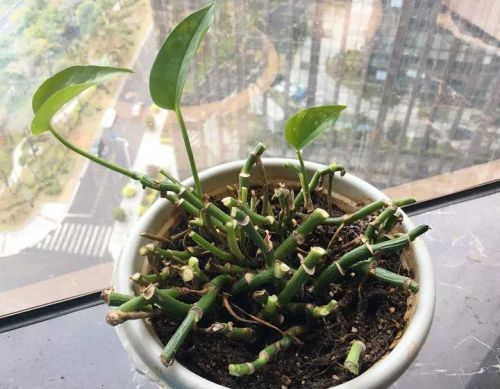
3. Prune before winter. You can cut off the tender branches and leaves, leaving only the relatively thick main stem to ensure it survives the winter.
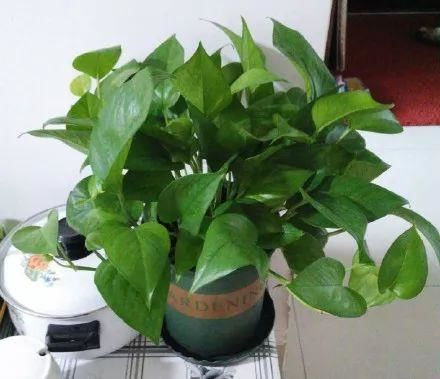
Pruning method:
1. In February and March, before the Chlorophytum comosum starts to grow wildly, you can shave its head, leaving only 5-8cm long;
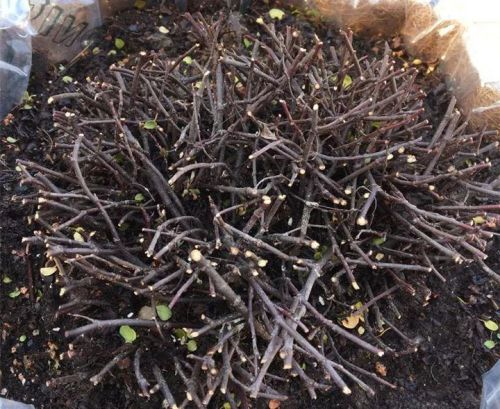
2. Normally, the branches and leaves are lush, but if there are yellow leaves or diseases, cut them off immediately to avoid infection;
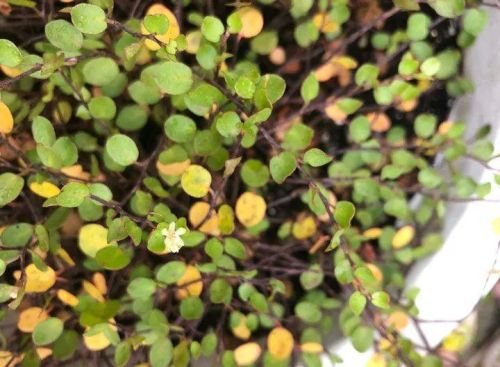
3. Prune before winter. When the temperature drops below 5 degrees, cut off thin and weak branches and keep strong branches to avoid frostbite.
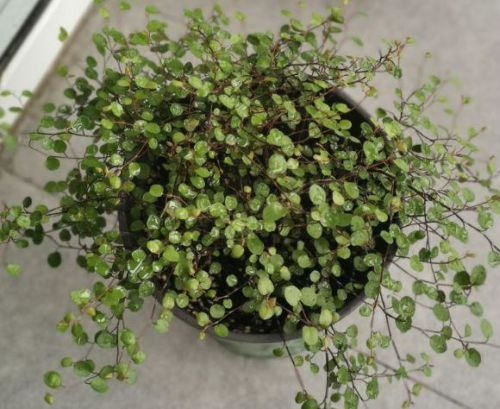
Pruning method:
1. If you want to grow more branches, you can top and prune the seedlings or repot them 2 months later. Topping means pinching off the top 3-5cm, so that one branch can grow into multiple branches;
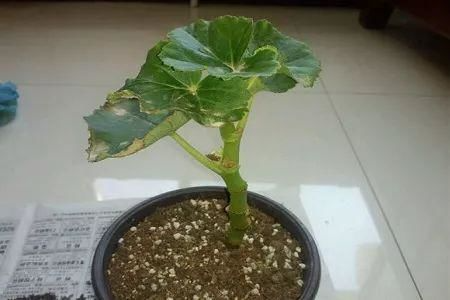
2. If there are yellow leaves, waterlogging, or black rot, prune them immediately. Cut them cleanly without any residue.
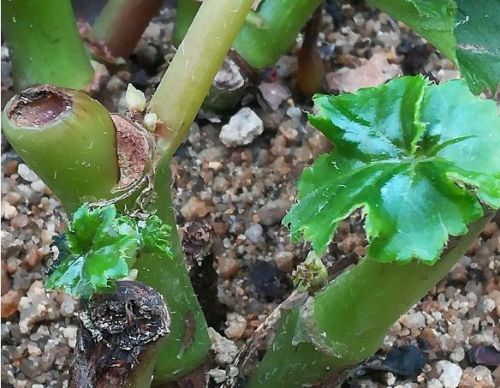
3. Prune the flowers when they are about to wither, otherwise the flowers will rot on the branches. Cut off 5-8cm of the flowers and stems, and do not water the wound;
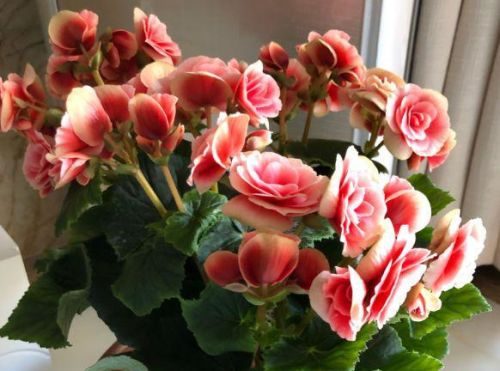
4. After the summer, prune around September. You can prune heavily, leaving only 2-3 buds to ensure growth next year.
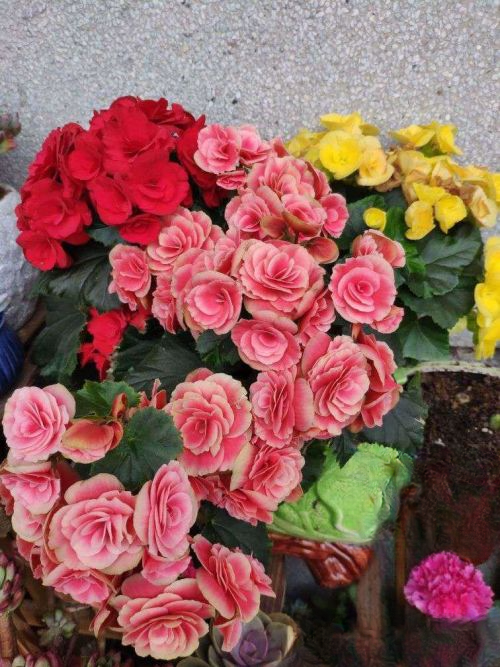
Pruning method:
1. Prune in spring from March to April, and in autumn from September to October. You can prune more, leaving 1-2 leaves on each branch;
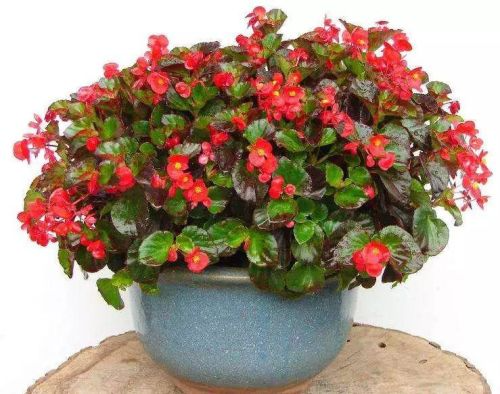
2. After the flowers bloom, cut them off along with the flower stalks to retain nutrients so that they can continue to bloom.
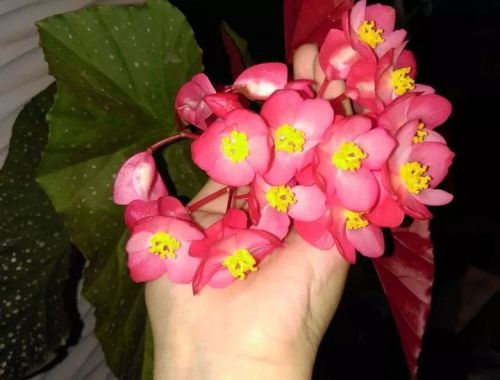
Pruning method:
1. A plant of Lucky Plant can only bloom once. You can cut the flowers when they fade and are about to wither to concentrate the nutrients to grow side buds. When the side buds grow up, you can divide the plants so that they can bloom.
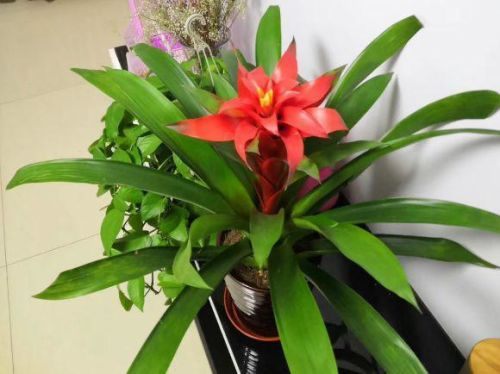
2. When you see the color of the flower turn yellow and brown, you can cut it off from the bottom, just cut off all the withered and yellow parts, and focus on caring for the places with small buds. When the small buds grow up, you can divide the plants, and the old plants can be discarded.
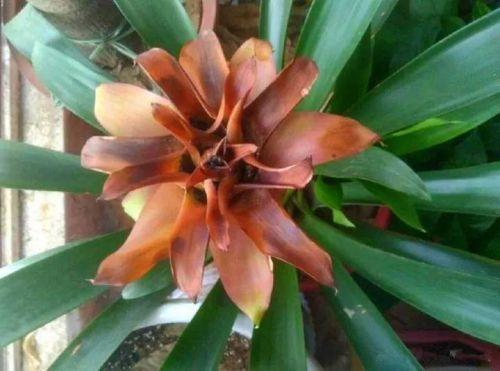
Pruning method:
1. Prune when the flowers are about to wither, and cut off the flower stems together. You can cut off 8-15cm to preserve nutrients, and maybe they can bloom again;
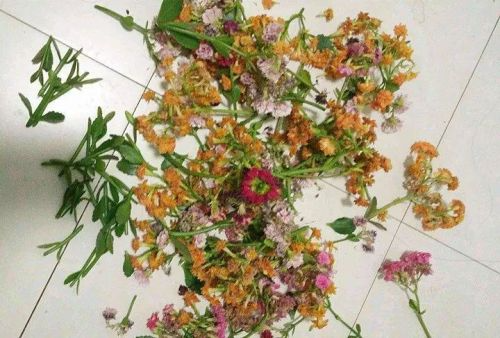
2. Prune after summer, which is around August to September. In the south, when it is hot, you can prune in September to October. After summer, the branches are relatively fragile, so you can prune them more harshly to make new branches more luxuriant.
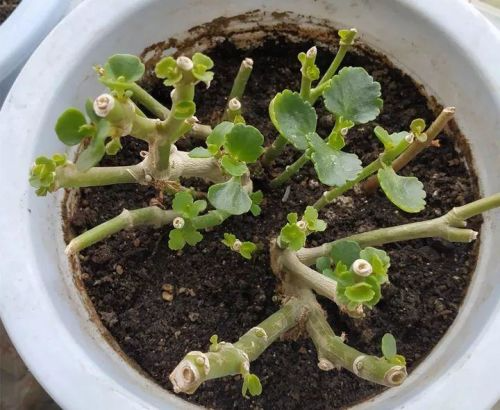
3. Prune before winter to promote flowering. Around November, you can top the plant appropriately and pick off the particularly large leaves on the top to stimulate the emergence of flower buds and increase light intensity.
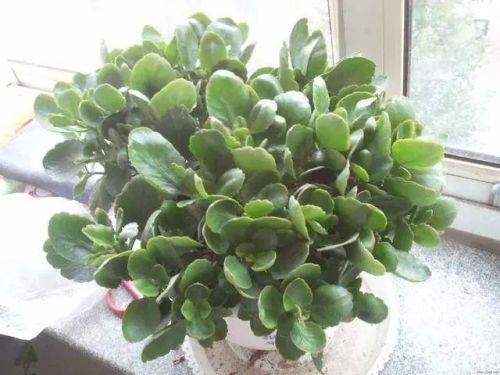
4. If the branches are usually too long, thin, or have diseases, insect pests, or black rot, they can be pruned at any time.
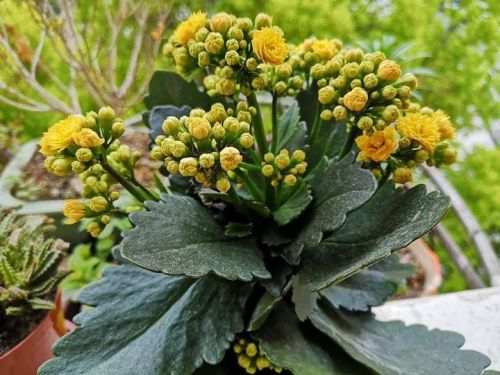
Pruning method:
1. When the Christmas cactus flower is about to fade, pick off 1-2 leaves along with the flowers. After a few days, flower buds will emerge from the middle of the leaves.
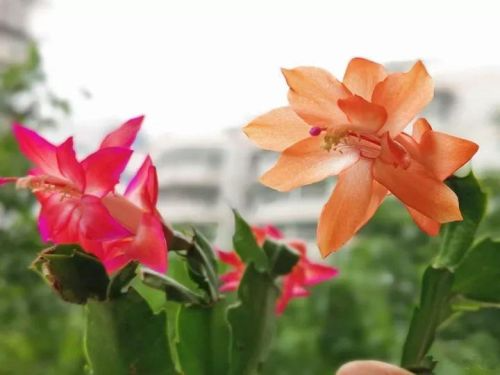
2. After autumn (September-October), keep 3-8 leaves on each branch to ensure that nutrients are concentrated on flowering, so that flowering will be more timely and more in winter.
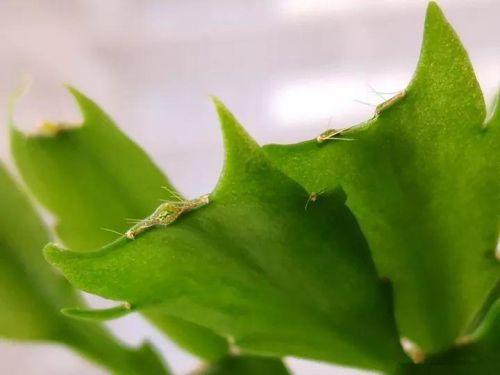
Pruning method:
1. When the flowers are about to wither, just cut off the remaining flowers together with the flower stems to preserve nutrients. You can water them with nutrient solution one week after pruning, and they may bloom again.
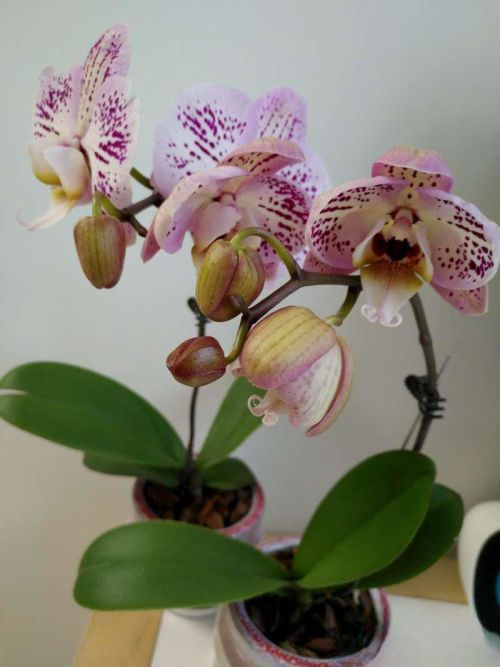
2. When pests and diseases occur, completely cut off the problematic leaves to avoid infection.
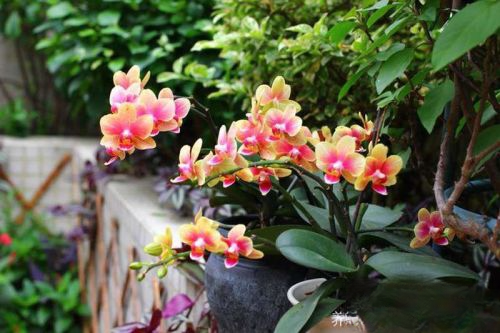
Pruning method:
1. Prune before budding in spring, in January or February in the south and in February in the north, to cut dead branches and diseased branches to avoid affecting spring growth;

2. Prune after the flowers fade, cut off the remaining flowers, and shorten the branches;
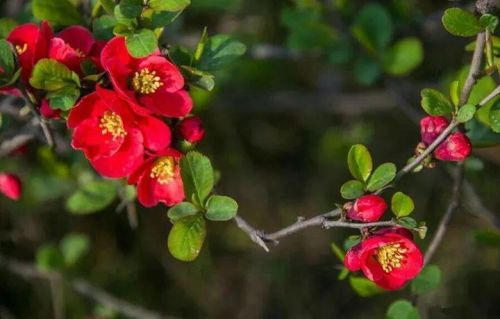
3. Prune after the leaves fall in winter, trim the shape, cut off the thin and weak branches and leave the strong branches to survive the winter.
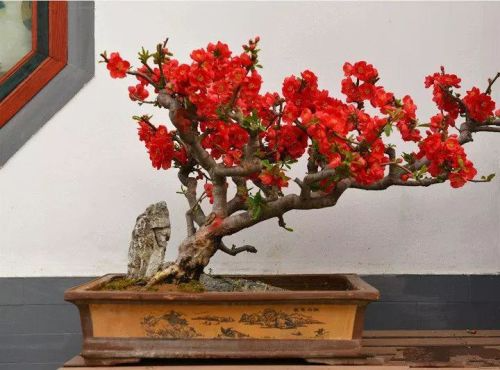
Pruning method:
1. After the flowers have bloomed, trim the remaining flowers and cut off the flower stems together;
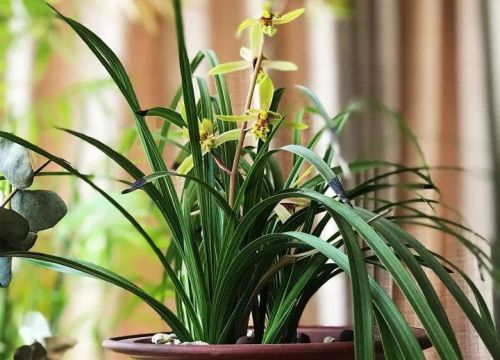
2. If you find any problems with the leaves, such as dryness, black spots, etc., cut them off immediately to avoid infection.
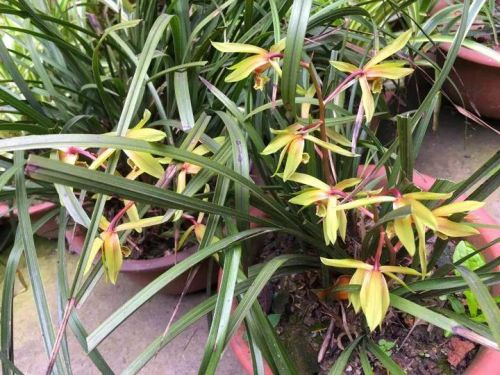
Pruning method:
1. When the flowers are about to wither, prune them and cut off the flower stems in the middle. The stems with flower buds will grow again soon.
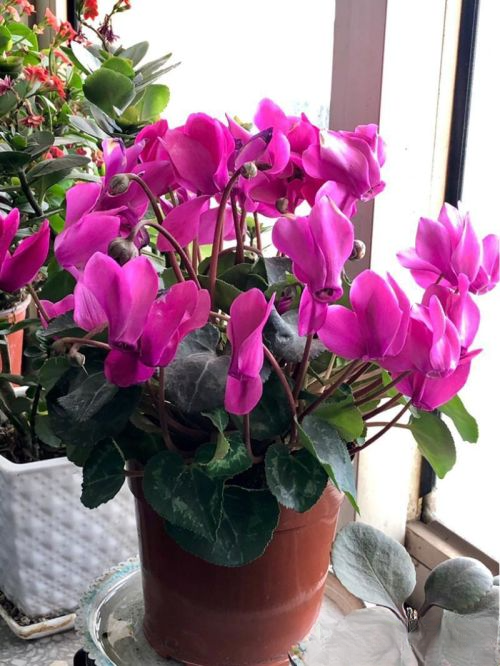
2. In summer, when the temperature is above 28 degrees, the plant will go dormant and may experience yellow or withered leaves. At this time, you can prune them away and water them less to ensure a smooth summer.
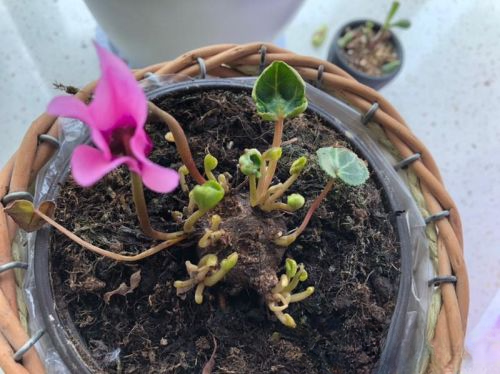
Pruning method:
1. In spring, when the seedlings grow to 20cm in height, you can top them to promote branching. Topping the seedlings means cutting off about 5cm of the top of the seedlings. This can turn one branch into multiple branches. If you don't want to do it, you don't have to do it.
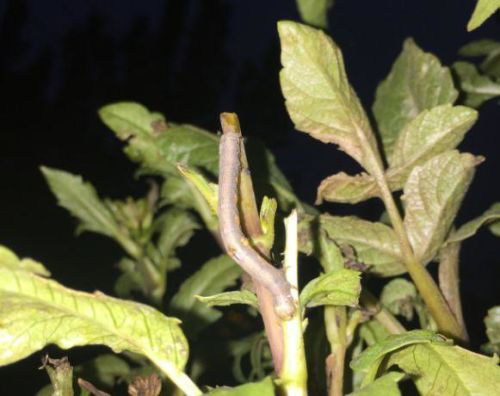
2. After the flowers have bloomed, trim the remaining flowers. When the flowers are about to wither, cut off about 10-15cm of the flowers and stems;
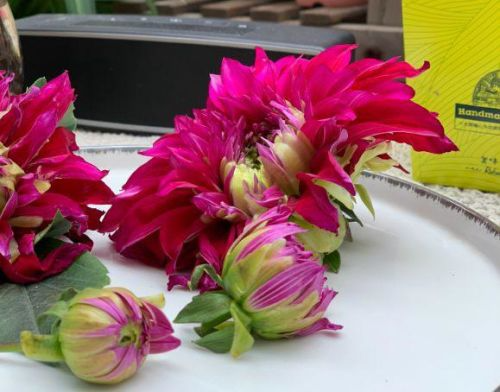
3. Usually prune dead branches, yellow leaves, and branches and leaves with disease spots, and cut them off in time to avoid infection;
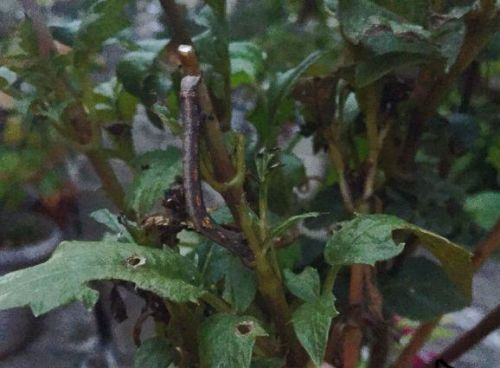
4. After the frost in autumn, the ground-planted dahlias will go dormant. You can cut off all the leaves, dig out the "sweet potato roots" in the ground, and bury them in the sand for preservation. For indoor potted dahlias, cut off all the leaves and cut off the water, and then plant them again in the spring of next year.

Pruning method:
1. When the seedlings are young or repotted 1-2 months later, you can pinch off the top buds 3-5cm above the ground, and one branch will become multiple branches, which can divide quickly;
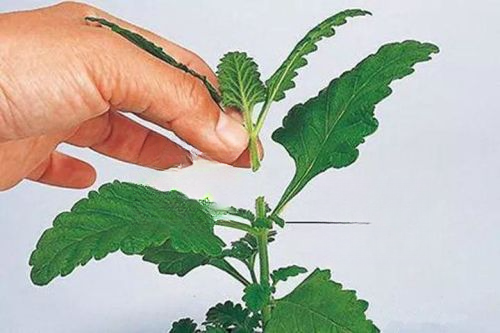
2. After flowering, trim the remaining flowers. When the flowers are about to wither, cut off 5-8cm of the flowers and stems to ensure a second wave of nutrition;
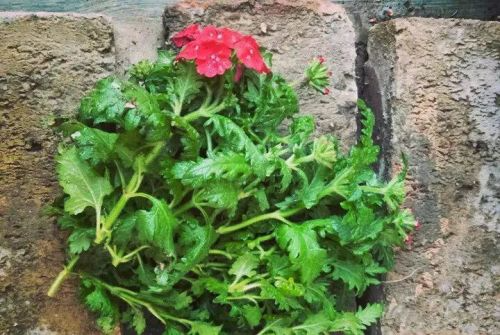
3. If the leaves are exposed to the sun for too long, they will turn yellow easily. Prune them in time to avoid infection and the occurrence of diseases and insect pests.
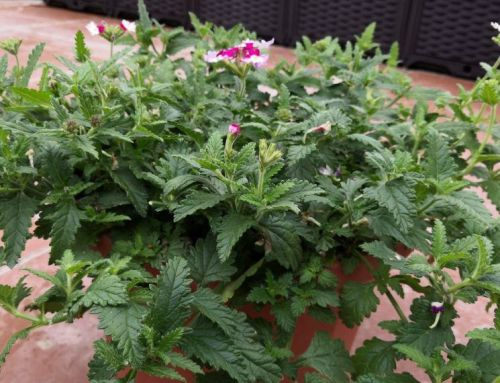
4. In the summer, the temperature is high and shade and water control are needed. The plant may be malnourished. In autumn (September-October), it needs heavy pruning to start growing again.
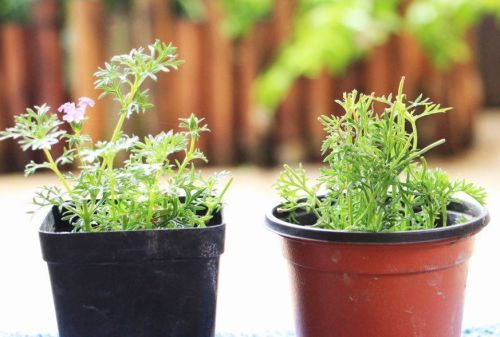
5. When winter comes, cut off thin branches and weak leaves, leaving only strong branches to avoid frostbite.

Image by: Queen Baby
Pruning method:
1. Prune before new buds appear in spring, mainly prune cross and dense branches, keep strong branches and remove weak branches, to ensure space, ventilation and lighting for new buds to grow;
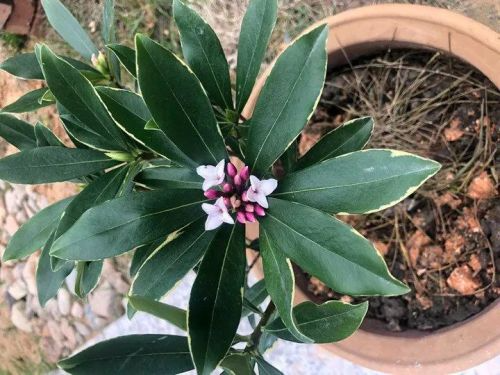
2. Prune the remaining flowers after they have bloomed;
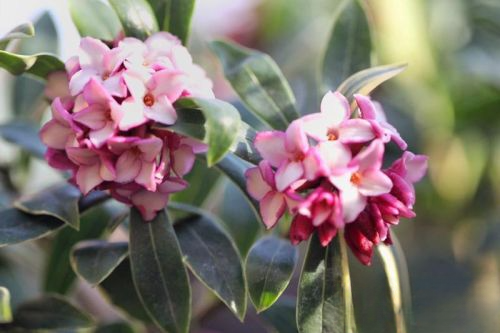
Prune in March and June to get through the summer. Before summer, cut short the new branches that have grown this year to ensure solid growth.
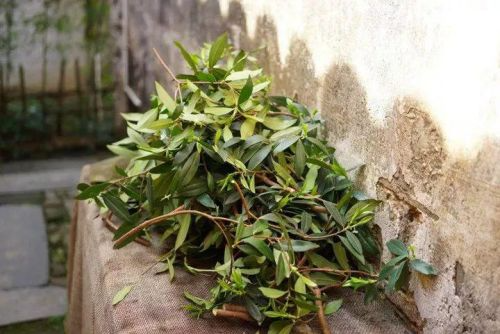
4. Winter pruning: Before winter, cut off dead and weak branches to retain nutrients.
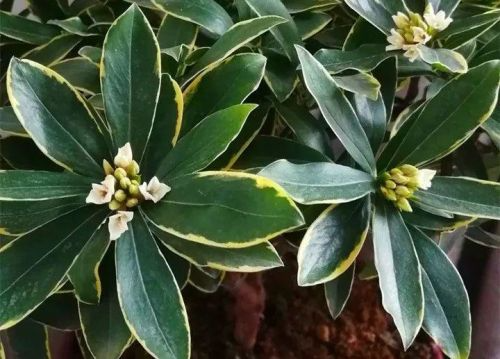
Pruning method:
1. Prune and shape the osmanthus in January and February. Before germination, prune the osmanthus into a good shape according to your personal preference;
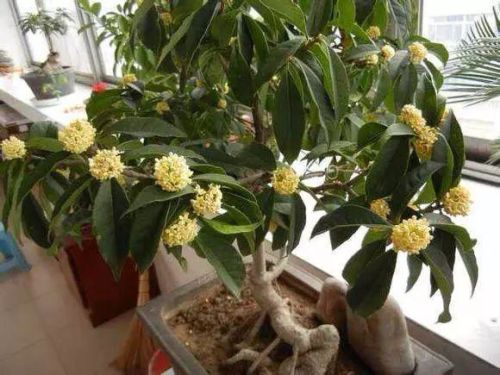
2. At the end of summer, cut off weak branches and branches that grow inward (see the picture below). These branches do not bloom, and cutting them off can preserve nutrients for flowering in autumn.
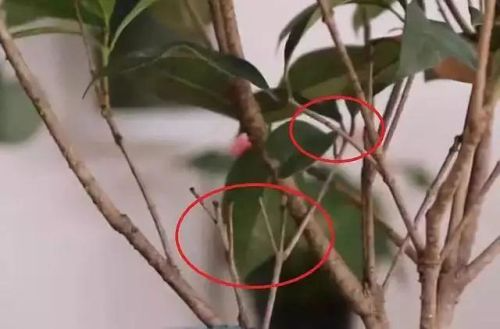
Pruning method:
1. In spring, pruning is best done before budding in February or March. You can prune the rubber tree heavily, leaving 5-8 cm of branches, so that more leaves can grow. If you don't like the compact and dense shape, you can also prune it into other shapes.
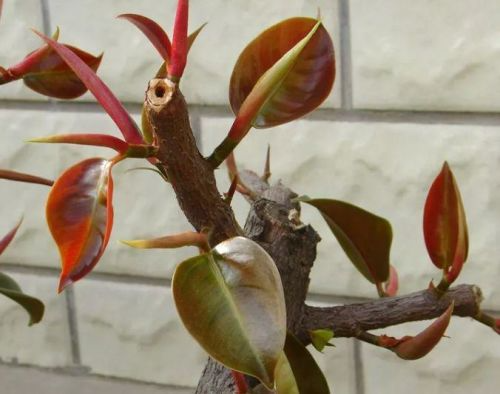
2. You can also prune it at ordinary times. If there are bad leaves or branches that are too long, you can cut them off and let them grow again.
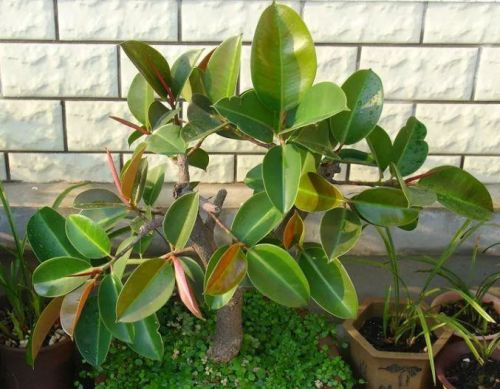
Pruning method:
1. Topping and pinching. Money trees are uneven in length. You can cut off some of the tops of the long branches to inhibit their continued growth and make the leaves below wider and larger.

2. If the branches fall over, in addition to tying them up with cloth strips, you can also cut them off directly and let them sprout and grow leaves again;
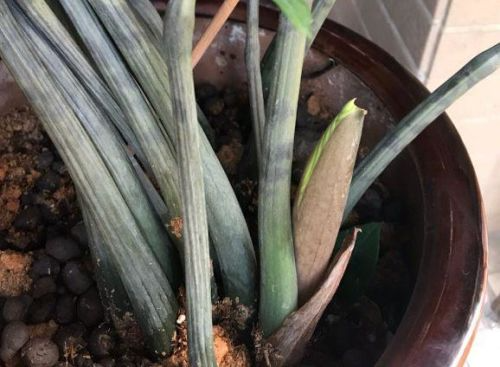
3. If the old leaves are growing poorly, they can be removed in time and some nutrient solution can be poured on them. Huaduoduo No. 1 or Aolv slow-release fertilizer will do.
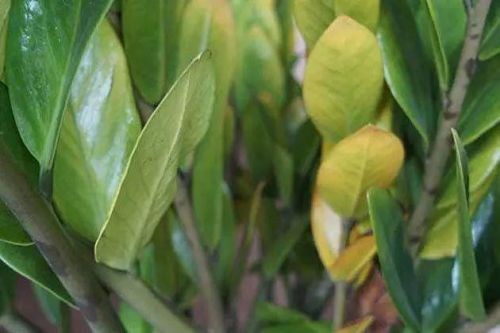
Pruning method:
1. The growth rate of copper coin grass is fast. If it grows poorly or in a messy way, you can shave it all, leaving only the roots below to produce new leaves in 7 days;
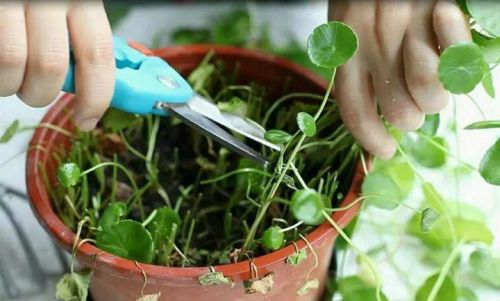
2. The flowering of the pennywort will consume nutrients, so it needs to be cut off in time. If you like to appreciate the flowers, you can keep them and add some nutrient solution after they bloom.
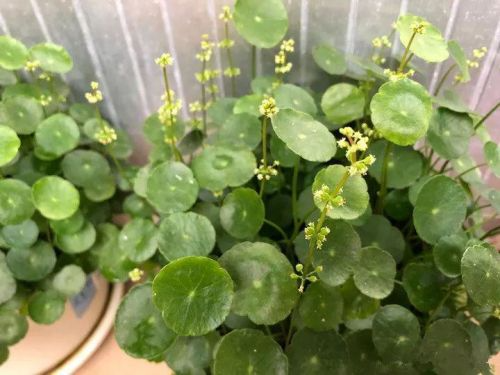
3. The pennywort is afraid of cold, so it can be cut off in November before winter to preserve nutrients and avoid frostbite.
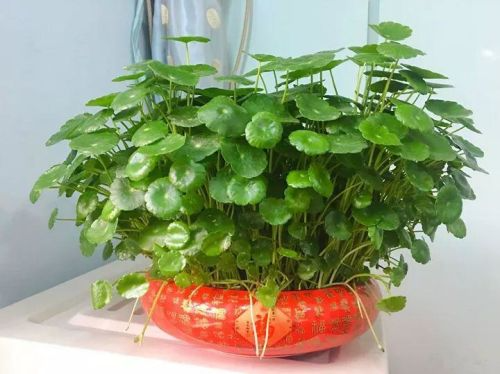
Pruning method:
1. Succulent flowers will consume too much nutrients, so you need to cut off the flower arrows in time. If you want to enjoy the flowers, you can cut them off and plant them in water, which can also ensure that the succulents are not affected;
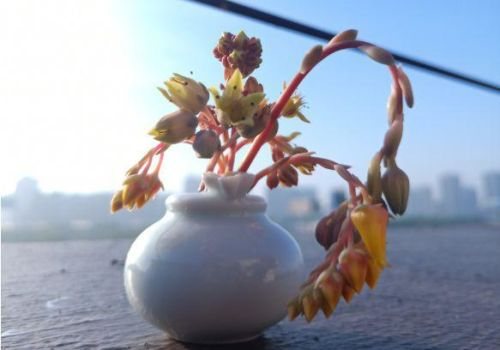
2. Indoor succulents are prone to grow and deform. You can cut them off in the middle to stop the growth in time. The cut part can sprout again.
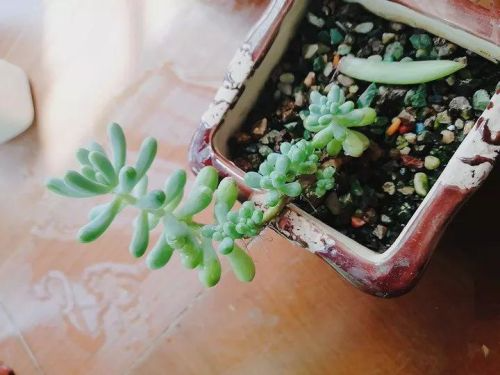
3. If there is black rot, waterlogging, or black spots, cut it off immediately to avoid infection. Sometimes you need to dig it out to check if the root system is rotten. If it is rotten (blackened), cut it off, soak it in carbendazim solution, and replant it in the soil;
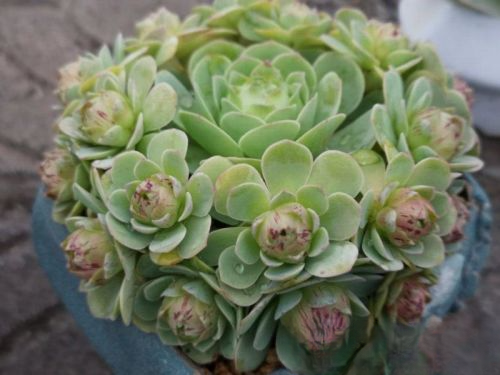
4. If the succulents grow too densely, you can cut them off when you need to separate them. The cut parts can also take root quickly when inserted into the soil.
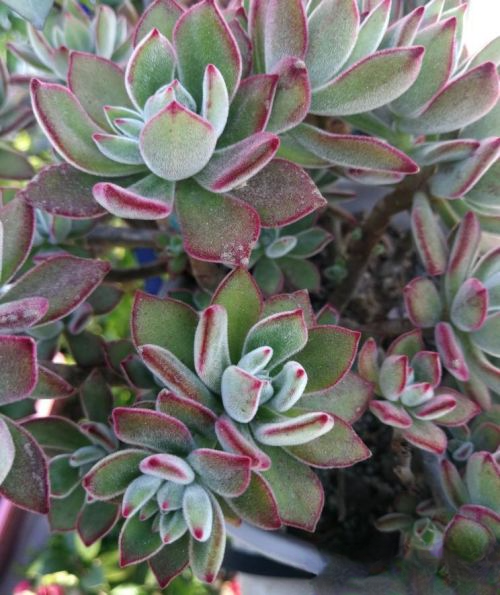
Pruning method:
1. You can cut it at any time. Some mints are edible. The leaves can be cut and used to make tea, cook dishes, and make cakes. They will grow again after being picked.
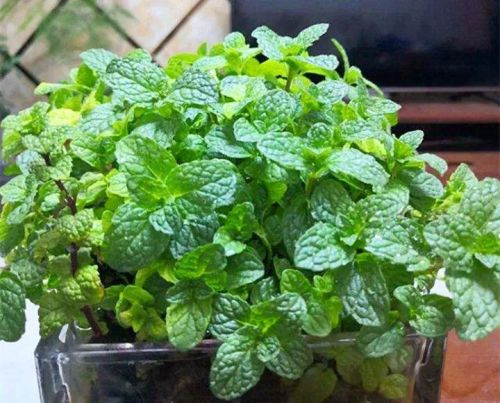
2. Mint needs to be watered frequently. If you cut the top and it grows fast, (there is no requirement for the pruning length), one branch can be split into two branches. Instead of letting the mint grow longer and longer and become sparse, it is better to cut it more often to let it grow out of the pot and become stronger and stronger.
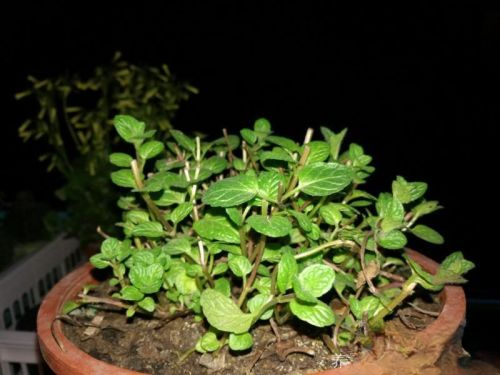
How to prune these 50 flowers
Have you all learned it?
Source: Flower Growing Encyclopedia (ID: yanghua98), Author: Huahua
Editors of this issue: Hu Chengyuan, Shi Lei